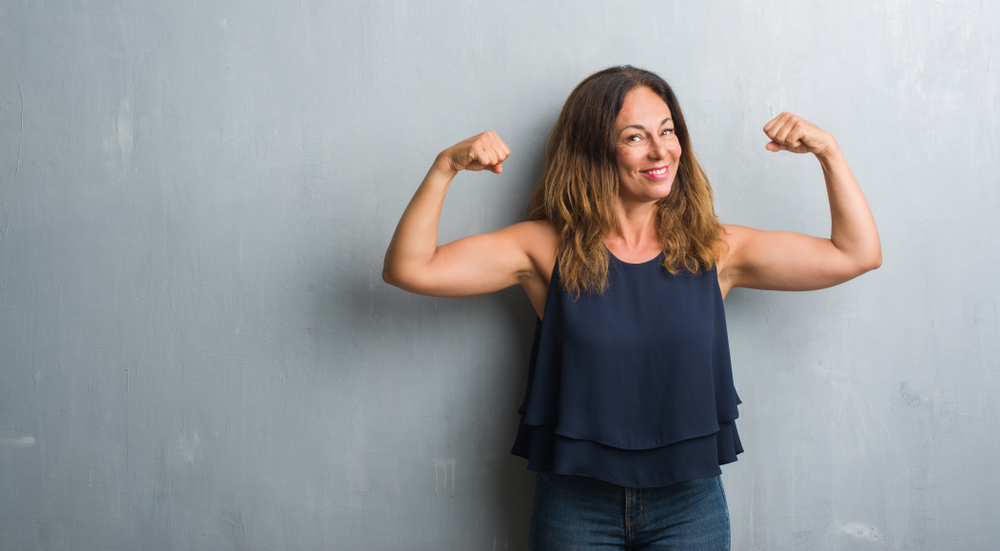- Heart disease is a prevalent health problem in the United States, especially for women.
- One way you can take care of your heart is by engaging in heart-healthy activities.
- Staying active and engaging in fun activities is certainly one contributing factor to heart health but you should also consider other lifestyle adjustments too, such as eating a healthy diet, managing your stress, and getting plenty of sleep.
Cardiovascular disease is a prevalent health problem in the United States. In fact, the Centers for Disease Control and Prevention (CDC) states that heart disease is still the leading cause of fatalities for women in the U.S. All the more reason to take care of your heart!
Regardless of your age, taking action to protect your heart is of the utmost importance. After all, this vital organ pumps your blood, providing your body with the oxygen and nutrients it needs to survive. And it’s never too late to start taking care of your heart. Follow along as we take a look at activities older women can do to improve their heart health!
Aerobic Exercises for Heart Health
Senior women should consider adding more aerobic exercises into their daily routine. Aerobic exercises support heart health because they improve circulation. According to Johns Hopkins Medicine, this can help lower blood pressure and rate.
Additionally, aerobic exercise can also reduce your risk of type 2 diabetes. And, if you are already living with diabetes, then these types of exercises can help you control your blood glucose. Ready to give it a try? Let’s take a look at a few aerobic activities you can start doing now!
Brisk Walking or Running
You don’t have to be an avid runner or take on marathons to reap the benefits. Brisk walking will do and it’s even gentler on your joints! That said, some women love running so whichever is more palatable to you, give it a try.
If you’re not used to walking or running regularly, it’s important to take it slow and ease yourself into it — you don’t want injuries! Start by walking around the block and slowly increase your route as you improve your endurance. According to the CDC, older adults need at least 150-minutes of moderate-intensity activity a week. You can break this up into 30-minute walks, 5-days a week.
Swimming or Aquafit
Nothing quite beats taking a dip on a hot summer day but it turns out swimming can benefit your heart health. You could make up your own swimming workout by trying different strokes or you can give an aquafit class a try!
Exercising in the pool can be particularly beneficial for older women because the buoyancy of the water makes it low-impact. This is a great option for those who have chronic pain, joint problems, or if you’re recovering from an injury. Each aquafit class typically starts with a warmup and then involves cardio and strength-training exercises, followed by a cooldown. Contact your local pool to find out what aquafit classes they offer.
Zumba
Do you love dancing? You don’t have to wait for a special event to start dancing again! Try taking a Zumba class in a studio or watching videos online to do it at home. It turns out, Zumba is an aerobic exercise that can benefit your heart health too.
WebMD points out that the high and low-intensity intervals are what makes Zumba a great cardio workout. In addition to benefiting your heart, Zumba can also help strengthen your legs, glutes, and core. Keep in mind, while Zumba can be great for beginners, it is not a low-impact form of exercise so be sure to talk to your doctor to find out if it’s right for you.
Resistance Training for Heart Health
Aerobic exercises aren’t the only activities that can benefit your heart health. Resistance training can help too. Resistance training can benefit the heart by reducing fat and creating leaner muscle mass, according to Johns Hopkins Medicine.
Additionally, when resistance training is combined with aerobic exercises, you may help lower LDL (bad) cholesterol and raise HDL (good) cholesterol. Women’s Health also points out that weight-bearing exercises can help improve bone density and prevent bone loss, both of which are important for senior women. Try to aim for two nonconsecutive days per week of resistance training to obtain the most benefits. Let’s take a look at some examples of resistance training next!
Bodyweight and Resistance Bands
Bodyweight resistance training is not only very effective but it’s the ideal place for beginners to start. This is because it allows you to get familiar with the movement and perfect your form before you start adding more weight.
Once you get more comfortable with weight-lifting exercises you can start adding resistance bands. Resistance bands add a safe level of resistance while making the movement slightly more challenging. They’re also great because they’re affordable and can be used anywhere including the gym or at home.
Free Weights and Machines
Once you’re ready to step up your resistance training a notch, give free weights and machines a try. Using weights is a simple way to measure your progress. As you add more weight, you will know you’re getting stronger. Free weights can include anything from dumbbells and barbells to common household items like water bottles or cans.
If you like working out at a gym, then machines can offer an effective workout and they don’t require a spotter. You may also want to hire a personal trainer to show you around the gym and help you get started.
Flexibility Workouts for Heart Health
Johns Hopkins Medicine says that flexibility workouts don’t directly contribute to heart health but they do benefit your musculoskeletal health. So why is this important?
The source explains that a good musculoskeletal foundation allows you to engage in the exercises that improve your heart so they really do go hand in hand. Additionally, good flexibility and balance can reduce your risk of falling and injury, allows you to have a better range of motion, and can help keep you independent — all important factors for older women. Flexibility activities should be practiced daily and before and after other exercises. Let’s take a look at some activities you can try that will improve both your flexibility and balance.
Yoga
Yoga isn’t just for the young and flexible, it can offer many benefits for senior women too. Yoga can be particularly beneficial for seniors as it can strengthen your bones, which may reduce your risk for osteoporosis. It may also help relieve aches and pains by teaching you how to breathe and relax through chronic pain.
Beginners may want to start with chair yoga which offers many of the same benefits as traditional yoga but with modified poses. As you gain balance and flexibility you can give regular yoga a try.
Tai Chi
Tai chi, also known as meditation in motion, is a rhythmic form of exercise. It’s also a low-impact form of exercise making it great for everyone, including seniors. Tai chi involves a series of movements that are performed in a slow, focused technique while also working on deep breathing. These gentle movements can help improve your balance and flexibility.
There are many online videos available that can help get you started, however, one of the best ways to learn is by taking a class. An instructor can show you the right moves and provide feedback to ensure you’re doing it safely and correctly.
Other Simple Ways to Add Movement to Your Day
You don’t have to join a gym or watch hours of online workout videos to benefit your health. There are many other simple ways to add more movement to your day to support your heart.
According to Healthline, other activities that improve your heart health include:
- Cleaning the house
- Gardening outdoors
- Cooking at home
- Showering
- Standing or walking while talking on the phone
- Parking further from entrances
- Taking the stairs instead of an elevator
- Stretching or walking during commercial breaks
Other Ways to Improve Your Heart Health
Staying active and engaging in fun activities is certainly one contributing factor to heart health but there are other lifestyle adjustments you should make that can make a difference too. For starters, be sure to eat a heart-healthy diet, rich in fresh fruits and vegetables and low in processed foods.
Managing your stress and getting plenty of good quality sleep is also important for your heart. The CDC also says quitting smoking (if you smoke) and watching your alcohol intake are also important for heart health. As is managing your blood pressure and being on the lookout for signs of diabetes. Protect your heart today and talk to your doctor about steps you can take to improve your heart health.















